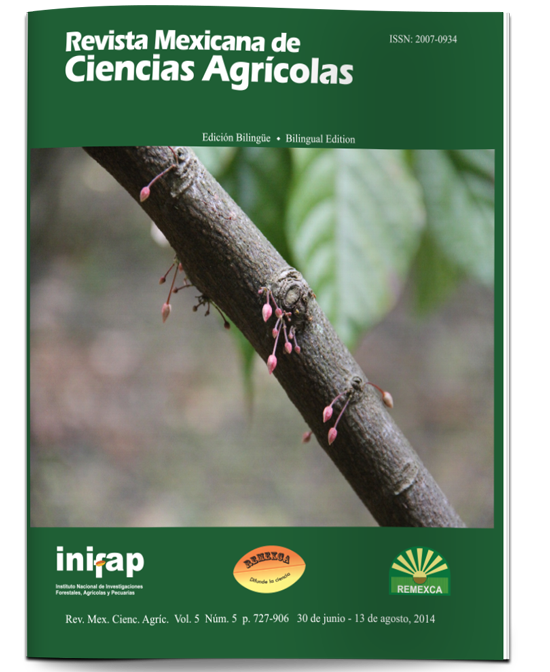Desiccation tolerance in seeds of nanche (Byrsonima crassifolia L.) Kunth
DOI:
https://doi.org/10.29312/remexca.v5i5.904Keywords:
Byrsonima crassifolia, ex situ conservation, in situ conservation, seeds recalcitrantAbstract
Desiccation tolerance and seed longevity of yellow nanche Tejupilco, State of Mexico (warm climate) and Tuxtepec, Oaxaca (warm wet) was determined to classify as orthodox, recalcitrant or intermediate and choosing the right strategy for You keep them. In the first stage, the effect of drying on seed survival was evaluated. For this, the seeds were dried at 10, 5%, and the moisture witness (10.1 to 18.9 for Tejupilco and Tuxtepec); were stored by zero, three and six months at -20 °C and 20% RH, in a cold room. The variables evaluated were: tetrazolium viability, germination and emergence rate. The results indicated that although the increased viability when stored for six months, the force decreased; while germination and emergence rate were better when the seeds were not stored (64.44% and 0.3 seedlings emerged per day, respectively), which allows inferring intolerant to cold storage. Zero, three and six months in two environments: In the second stage the longevity of stored seeds was determined by cold roomat5±2°Cand20%RHandinaroomat19°C and 58% HR, with the same moisture content of the first stage. Above these variables were evaluated; the best performance was obtained when the seeds were not stored. It was concluded that seeds of both climates nanche are recalcitrant.
Downloads
Downloads
Published
How to Cite
Issue
Section
License
The authors who publish in Revista Mexicana de Ciencias Agrícolas accept the following conditions:
In accordance with copyright laws, Revista Mexicana de Ciencias Agrícolas recognizes and respects the authors’ moral right and ownership of property rights which will be transferred to the journal for dissemination in open access. Invariably, all the authors have to sign a letter of transfer of property rights and of originality of the article to Instituto Nacional de Investigaciones Forestales, Agrícolas y Pecuarias (INIFAP) [National Institute of Forestry, Agricultural and Livestock Research]. The author(s) must pay a fee for the reception of articles before proceeding to editorial review.
All the texts published by Revista Mexicana de Ciencias Agrícolas —with no exception— are distributed under a Creative Commons License Attribution-NonCommercial 4.0 International (CC BY-NC 4.0), which allows third parties to use the publication as long as the work’s authorship and its first publication in this journal are mentioned.
The author(s) can enter into independent and additional contractual agreements for the nonexclusive distribution of the version of the article published in Revista Mexicana de Ciencias Agrícolas (for example include it into an institutional repository or publish it in a book) as long as it is clearly and explicitly indicated that the work was published for the first time in Revista Mexicana de Ciencias Agrícolas.
For all the above, the authors shall send the Letter-transfer of Property Rights for the first publication duly filled in and signed by the author(s). This form must be sent as a PDF file to: revista_atm@yahoo.com.mx; cienciasagricola@inifap.gob.mx; remexca2017@gmail.
This work is licensed under a Creative Commons Attribution-Noncommercial 4.0 International license.



